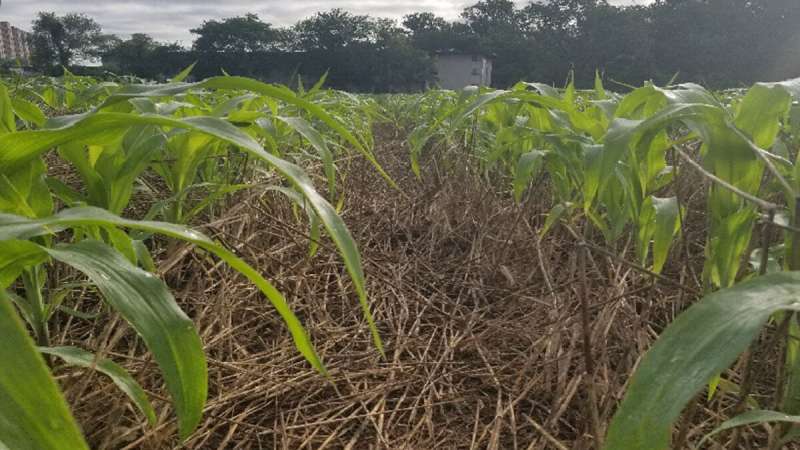Modeling mulch to understand agricultural soil

Ensuring appropriate access to water is a key concern for farmers. Crops can underperform, or even die, in the presence of too little or too much water. But soil's ability to retain water is a complex process that depends on variations in soil composition, surface morphology, and local temperature, humidity, and wind, among other factors.
Wang et al. seek to model this process for a common agricultural scenario: soil in the presence of residue mulch, the remains of a killed winter cover crop. Mulch is known to have several stabilizing effects on soil, including insulation from sunlight, reduction in the speed of water flowing over the surface, and minimization of temperature variation.
The authors rely on a finite element method that splits the region in question into a series of discrete layers. At the top is the interface between the mulch and the air. Below that layer is a series of mulch layers, and at the bottom lies the mulch-soil boundary. Various inputs are then propagated through the layers based on their governing equations. Precipitation, for instance, arrives first from the atmosphere and is steadily absorbed as it passes through each layer.
These physical processes are integrated into an existing MAIZSIM model, which provides additional biological processes, such as plant growth and the effects of that growth on the soil. Although MAIZSIM models the growth of corn, other crop models sharing the same soil code extend these techniques to additional important crops, such as soybeans and potatoes. The authors then augment the extended MAIZSIM model with existing models to simulate mulch decomposition and the exchange of carbon and nitrogen with the soil.
The authors performed two simulations to demonstrate that the model produces plausible results in response to such events as rainstorms and decomposition. They discovered that it responds reasonably in a qualitative sense. However, to produce accurate quantitative results, future work will need to calibrate the model's various modules using data collected from the field.
The research was published in Water Resources Research and Eos.
More information: Zhuangji Wang et al, Simulations of Water and Thermal Dynamics for Soil Surfaces With Residue Mulch and Surface Runoff, Water Resources Research (2021). DOI: 10.1029/2021WR030431
Morgan Rehnberg, Modeling Mulch to Understand Agricultural Soil, Eos (2021). DOI: 10.1029/2021EO210686
Journal information: Water Resources Research
Provided by American Geophysical Union
This story is republished courtesy of Eos, hosted by the American Geophysical Union. Read the original story here.




















